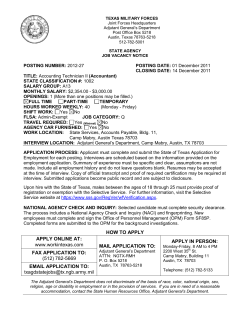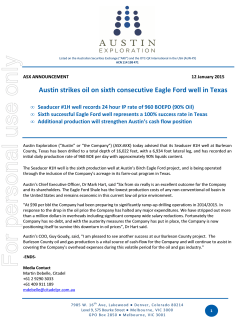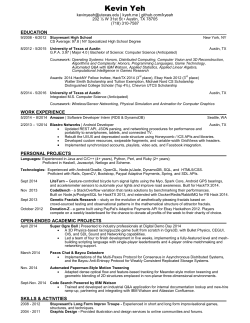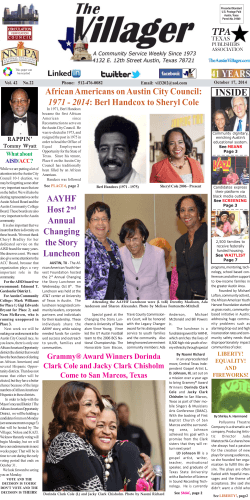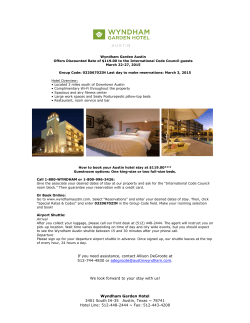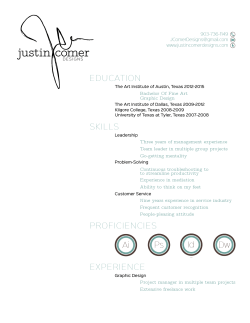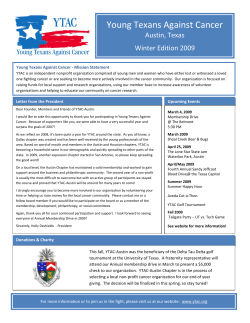
Exploring “Asking questions” Worksheet 1
317 Topic 8: Mindset, motivation, and algebraic thinking MINDSET, MOTIVATION, AND ALGEBRAIC THINKING Lesson 8.1 Your mindset and challenging problems 8.1 OPENER Think about the last time you experienced the challenge of learning something new. 1. Describe the new topic you learned about. 2. What do you think about or do to keep yourself going when you are learning something extra challenging? 8.1 CORE ACTIVITY 1. Personal reflection: Have you ever had an experience similar to Richie’s? What was the situation? How did you feel? What did you do? 2. How would you describe the idea of a mindset? 3. Complete the following puzzle using the answer choices provided. Write one name in each empty box to show what Richie and John might say or do in each situation because of their mindsets. Working on this test 4. Preparing for future tests I'm not smart enough to do this. I'll form a study group. We can learn from each other. I can do this if I focus. Why bother studying? It won't help. I have no idea what to do next. Tutoring won't help. I can't get any smarter. I'll try to solve this a different way. I'll spend more time studying. Consider your mindset about your math intelligence. Is it more like Richie’s or more like John’s? Why? Copyright © 2014 Charles A. Dana Center at the University of Texas at Austin, Learning Sciences Research Institute at the University of Illinois at Chicago, Agile Mind, Inc. 318 Unit 3 – Rate of change 8.1 REVIEW ONLINE ASSESSMENT You will work with your class to review the online assessment questions. Problems we did well on: Skills and/or concepts that are addressed in these problems: Problems we did not do well on: Skills and/or concepts that are addressed in these problems: Addressing areas of incomplete understanding Use this page and notebook paper to take notes and re-work particular online assessment problems that your class identifies. Problem #_____ Work for problem: Problem #_____ Work for problem: Problem #_____ Work for problem: Copyright © 2014 Charles A. Dana Center at the University of Texas at Austin, Learning Sciences Research Institute at the University of Illinois at Chicago, Agile Mind, Inc. Topic 8: Mindset, motivation, and algebraic thinking 319 HOMEWORK 8.1 Notes or additional instructions based on whole-class discussion of homework assignment: Next class period, you will take a mid-unit assessment. One good study skill to prepare for tests is to review the important skills and ideas you have learned. Use this list to help you review these skills and concepts, especially by reviewing related course materials. Important skills and ideas you have learned so far in the unit Rate of change: • Represent motion on a graph and investigate how the change in movements affects the graph • Understand the effect a change in speed or rate has on a motion graph • Find rates for data in tables • Compare different constant rates • Find rates from graphs Homework Assignment Part I: Study for the mid-unit assessment by reviewing the key ideas listed above. Part II: Complete the online More practice activity in the topic Exploring rate of change in motion problems. Note the skills and ideas for which you need more review, and refer back to related activities and animations from this topic to help you study. Part III: Complete Staying Sharp 8.1 Copyright © 2014 Charles A. Dana Center at the University of Texas at Austin, Learning Sciences Research Institute at the University of Illinois at Chicago, Agile Mind, Inc. 320 Unit 3 – Rate of change STAYING SHARP 8.1 Practicing algebra skills & concepts 1. Complete the following table to investigate the magic numbers puzzle. 2. Rewrite the expression by collecting like terms. 11x + 3a + 7 – 5b – 4a – 2x + 6 Directions Example For any number, n 3 n Choose a number Double the number Half that number Preparing for upcoming lessons 3. Express the ratio of width to length for each rectangle as a fraction. Width Length Ratio 4 5 4/5 5 6 6 7 7 8 8 9 4. The parent volunteers made 120 snow cones in 5 hours. The student council made 100 snow cones in 4 hours. Who made more snow cones per hour? Answer with supporting work: Are the rectangles similar? 5. Graph the following points: (3,5) (0,0) (-3,-5) ? Circle your answer: Reviewing pre-algebra ideas Do all of the points lie on the same line? 6. Which of the following is the best model for Why did you pick that answer? Copyright © 2014 Charles A. Dana Center at the University of Texas at Austin, Learning Sciences Research Institute at the University of Illinois at Chicago, Agile Mind, Inc. 321 Topic 8: Mindset, motivation, and algebraic thinking Lesson 8.2 Rates and unit rates 8.2 OPENER When comparing fruit weights on a balance scale, Jane notices the following relationships: 1. • 1 orange = 2 bananas • 3 apples = 2 oranges • 1 bunch of grapes = 2 apples Use Jane’s fruit comparisons to determine whether her statements below are true or false. If a statement is false, revise the quantity on the right side of the statement to make it true. Statement True or False Revised statement [If original statement is false] a. 6 apples = 4 oranges 6 apples = b. 3 apples = 2 bananas 3 apples = c. 4 oranges = 2 bunches of grapes 4 oranges = d. 8 bananas = 6 apples 8 bananas = e. 5 apples = 4 bunches of grapes 5 apples = 8.2 MID-UNIT ASSESSMENT Today you will take a mid-unit assessment. Copyright © 2014 Charles A. Dana Center at the University of Texas at Austin, Learning Sciences Research Institute at the University of Illinois at Chicago, Agile Mind, Inc. 322 Unit 3 – Rate of change 8.2 CONSOLIDATION ACTIVITY 1. In the Opener, you may have noticed some unit rates. For example, you saw the rate of 2 bananas/1 orange and the rate of 2 apples/1 bunch of grapes. A unit rate is a comparison of two measurements in which one of the terms has a value of 1. Consider the relationship represented on each scale. Describe each relationship as a rate, using the names of the fruits as the units. a. The scale indicates that _____ strawberries balance _____ apple(s). Write this as a unit rate. Unit rate: ________________________ b. The scale indicates that _____ limes balance _____ apple(s). Write this as a unit rate. Unit rate: 2. ________________________ Using the information from the two balances pictured in problem 1, write another rate. Sketch a new balance scale that represents this rate. Unit rate: ________________________ Copyright © 2014 Charles A. Dana Center at the University of Texas at Austin, Learning Sciences Research Institute at the University of Illinois at Chicago, Agile Mind, Inc. 323 Topic 8: Mindset, motivation, and algebraic thinking 3. Use the scale pictured below to complete the table and sketch the graph of the relationship between limes and oranges. Limes Oranges 6 9 10 20 1 1 Unit rate: _____ limes/orange or _____ oranges/lime Copyright © 2014 Charles A. Dana Center at the University of Texas at Austin, Learning Sciences Research Institute at the University of Illinois at Chicago, Agile Mind, Inc. 324 Unit 3 – Rate of change 4. The school district in which Mr. Robles teaches provides 8 whiteboards for a class of 24 students. Use this information to answer the questions in the chart. Column 1 Column 2 What is the unit rate of students per whiteboard? What is the unit rate of whiteboards per student? Assume the rate stays the same. How many students are there if the district provides 32 whiteboards? Assume the rate stays the same. How many whiteboards would the district provide for 96 students? Assume the rate stays the same. How many students are there if the district provides 4 whiteboards? Assume the rate stays the same. How many whiteboards would the district provide for 12 students? Compare your answers in Column 1 to those in Column 2. What do you notice? 5. Consider your problem-solving experience as you worked on the mid unit assessment. Reflect on the following questions. You will discuss these questions as a class. Be prepared to share your answers. • When you first started the assessment, did you believe you would be successful with it? Why or why not? • As you began working on the assessment, were you able to find answers easily, or did you try things that didn't work? How did you get back on track? • As you continued to work on the assessment, was there ever a time you wanted to give up? How did you feel? Why didn't you give up? • How did your mindset help you as you worked on the assessment? Copyright © 2014 Charles A. Dana Center at the University of Texas at Austin, Learning Sciences Research Institute at the University of Illinois at Chicago, Agile Mind, Inc. 325 Topic 8: Mindset, motivation, and algebraic thinking HOMEWORK 8.2 Notes or additional instructions based on whole-class discussion of homework assignment: Part I: Use the table below to record your notes about the comparative weights of different fruit combinations and write their unit rates. You need to go online to the balance scale in the Lesson “Rates and unit rates” in the topic Mindset, motivation, and algebraic thinking to complete the table. Fruit on left side = Fruit on right side Write as a unit rate in two ways Example: 3 Limes = 2 Oranges 1 1/2 limes/orange or 2/3 of an orange/lime 4 strawberries = = 4 oranges = = 1 orange 2 limes 1 lime = Copyright © 2014 Charles A. Dana Center at the University of Texas at Austin, Learning Sciences Research Institute at the University of Illinois at Chicago, Agile Mind, Inc. 326 Unit 3 – Rate of change Part II: Read the following elevator problem and answer the questions. Elevators A and B travel at different constant rates. Elevator A takes 6 seconds to travel 4 floors. Elevator B can travel 3 floors in 5 seconds. 1. Each elevator starts at the ground floor. If each elevator continues moving at its current speed, which elevator will arrive at the 30th floor first? Show how you figured out the solution. 2. Which elevator is faster? How can you compare their speeds? Part III: This graph represents the relationship between the number of students in your class and the total number of dogs they own. 1. Label the axes and write the rate. ________ dogs/student 2. If this rate remained constant, how many dogs would there be if there were 36 students in the class? 3. How would your answers to questions 1 and 2 differ if you had labeled your axes differently? Copyright © 2014 Charles A. Dana Center at the University of Texas at Austin, Learning Sciences Research Institute at the University of Illinois at Chicago, Agile Mind, Inc. 327 Topic 8: Mindset, motivation, and algebraic thinking STAYING SHARP 8.2 1. Perform the following calculations. Look for a pattern. Which of the following choices is closest to the correct answer? Practicing algebra skills & concepts 30 · 10 30 · 2 30 · 12 10 · 11 7 · 11 a. 0 17 · 11 b. 0.5 c. 1 d. 2 What pattern did you find? Why? Preparing for upcoming lessons 3. 5. The second rectangle has side lengths that have been increased by 3 feet each. Are the two rectangles similar? Explain why or why not. 4. Find the distance between each pair of points: 6. (0,5) and (0,8) Reviewing pre-algebra ideas 2. (7,0) and (2,0) (4,14) and (4,9) If you score 90% on an assignment, what is the ratio of correct questions to total questions? Answer: Estimate the values to the closest whole numbers: is between is between and and Find the product: = (1,171) and (11,171) Does this product make sense? (6,-2) and (6,3) Copyright © 2014 Charles A. Dana Center at the University of Texas at Austin, Learning Sciences Research Institute at the University of Illinois at Chicago, Agile Mind, Inc. 328 Unit 3 – Rate of change Copyright © 2014 Charles A. Dana Center at the University of Texas at Austin, Learning Sciences Research Institute at the University of Illinois at Chicago, Agile Mind, Inc. Topic 8: Mindset, motivation, and algebraic thinking 329 Lesson 8.3 Motivation and goal setting 8.3 OPENER In the topic Problem solving and metacognition, you learned that using metacognitive strategies helps you maximize your effort, helping you become a more effective learner. List three things you do to make yourself work hard in this class. • • • 8.3 CORE ACTIVITY 1. 2. Consider your motivation with these questions. a. What things are you naturally motivated to do? b. What tasks must you do that you don't really enjoy? c. What kinds of reasons or rewards might keep you motivated to work on tasks you don't enjoy? For each goal listed below, decide whether or not the goal is SMART. If it is not yet SMART, explain which elements are missing. Then try to rewrite the goal so that it is a SMART goal. a. I will eat better from now on. b. I will limit myself to one candy bar each week for the rest of this year. c. Next month I’ll read a book about a different culture. Copyright © 2014 Charles A. Dana Center at the University of Texas at Austin, Learning Sciences Research Institute at the University of Illinois at Chicago, Agile Mind, Inc. 330 Unit 3 – Rate of change 3. d. Starting tomorrow and for the next two months, I will eat yogurt instead of chips for my after-school snack. e. I will never eat candy bars again. f. I will be successful in life. Write a goal for yourself that you can accomplish within the next week. Remember, your goal should be SMART: Specific Measurable Attainable Relevant Time-bound 8.3 CONSOLIDATION ACTIVITY 1. Consider how your attitudes and behaviors might be different when you are highly motivated or not at all motivated. Highly motivated Not motivated Copyright © 2014 Charles A. Dana Center at the University of Texas at Austin, Learning Sciences Research Institute at the University of Illinois at Chicago, Agile Mind, Inc. Topic 8: Mindset, motivation, and algebraic thinking 331 2. Think of a situation outside of school in which you felt highly motivated to learn. How did you feel in that situation? Why did you feel motivated? How successful were you in learning the task? 3. Think of a class in which you felt highly motivated to learn. How did you feel in that class? Why did you feel motivated? How did your level of motivation affect the way you worked? 4. Think of a class in which you felt less motivated to learn. How did you feel in that class? Why did you feel unmotivated? How did your level of motivation affect the way you worked? 5. Now consider a longer-term goal. a. Write a SMART long-term goal for this year's mathematics class. b. Write three enabling goals that will help you achieve the long-term goal you set for this course. Enabling goal 1 Enabling goal 2 Enabling goal 3 Copyright © 2014 Charles A. Dana Center at the University of Texas at Austin, Learning Sciences Research Institute at the University of Illinois at Chicago, Agile Mind, Inc. 332 Unit 3 – Rate of change HOMEWORK 8.3 Notes or additional instructions based on whole-class discussion of homework assignment: Homework Assignment Part I: Complete the online More practice in the topic Mindset, motivation, and algebraic thinking. Part II: Complete Staying Sharp 8.3. As you complete the More practice, record below any questions you may have or challenges you encountered with the items. Copyright © 2014 Charles A. Dana Center at the University of Texas at Austin, Learning Sciences Research Institute at the University of Illinois at Chicago, Agile Mind, Inc. 333 Topic 8: Mindset, motivation, and algebraic thinking STAYING SHARP 8.3 2. Evaluate the rule y = 3x + 2 to complete the table. x y 0 1 2 3 Explain your reasoning: What value of x will make this function rule give y = 17? 3. In triangle ABC, legs AB and BC are congruent. Use this information to find the ratio of BC to AC. 4. Suppose you got 3 out of every 4 questions correct on your homework. How many total questions were on the homework if you got 12 questions correct? 5. Graph the following points: (-2,4) (0,0) (-1,2) (1, 2). 6. Tami saw the equation below and said, “When you Preparing for upcoming lessons Practicing algebra skills & concepts 1. Fill in the blanks by comparing the left side to the right side of each equation. Do not compute. Reviewing pre-algebra ideas multiply, you should always get a bigger number. But is not bigger than , so I don’t think this multiplication problem is correct.” If the problem is wrong, fix it. If it is right, explain why Tami’s statement is wrong. Do all of the points lie on the same line? Copyright © 2014 Charles A. Dana Center at the University of Texas at Austin, Learning Sciences Research Institute at the University of Illinois at Chicago, Agile Mind, Inc. 334 Unit 3 – Rate of change Copyright © 2014 Charles A. Dana Center at the University of Texas at Austin, Learning Sciences Research Institute at the University of Illinois at Chicago, Agile Mind, Inc. 335 Topic 8: Mindset, motivation, and algebraic thinking Lesson 8.4 Rates and work 8.4 OPENER Dylan and Austin are brothers. They play a racing game on the stairs. In the game, they jump up the stairs, landing on two feet each time. When Austin jumps, he lands on each step. When Dylan jumps, he skips a step and lands on every other step. 1. Fill in the tables with the data from Dylan and Austin’s race. Use the tables to show how you calculate each of their rates of stairs per jump. 2. Who has to take more jumps to get to the top of the stairs? 3. What is the relationship between the number of steps per jump and the time it takes to reach the top of the stairs? Dylan Number Stairs of jumps Climbed Austin Number Stairs of jumps Climbed 8.4 CORE ACTIVITY A school’s Environmental Club attends an annual community clean-up event. The organizers of the event have created games for the attendees. In one game, each participant is assigned an area of land that is scattered with litter. The winner is the person who cleans up his or her area in the fastest time possible. Tammy can clean one-half of her area in one hour. Melissa can clean one-third of her area in one hour. Alberto can clean two-thirds of his area in one hour. Use this information to answer the following questions and find the winner of the competition. Copyright © 2014 Charles A. Dana Center at the University of Texas at Austin, Learning Sciences Research Institute at the University of Illinois at Chicago, Agile Mind, Inc. 336 Unit 3 – Rate of change 1. Who will win the clean up game? Who will come in last place? Justify your answers. 2. Two new participants enter the competition. Santay is able to clean one-fourth of his area in an hour and Leticia is able to clean four-fifths of her area in an hour. Figure out the amount of time it takes each of these five students to clean their areas if they work alone. Clean-up rate Time it takes to clean the area the area per hour the area per hour the area per hour the area per hour the area per hour 8.4 REVIEW MID-UNIT ASSESSMENT Today you will review your mid-unit assessment. Copyright © 2014 Charles A. Dana Center at the University of Texas at Austin, Learning Sciences Research Institute at the University of Illinois at Chicago, Agile Mind, Inc. 337 Topic 8: Mindset, motivation, and algebraic thinking HOMEWORK 8.4 Notes or additional instructions based on whole-class discussion of homework assignment: Part I: Revisiting the Stair-Jumping Problem Dylan and Austin are brothers. They play a racing game on the stairs. In the game, they jump up the stairs, landing on two feet each time. When Austin jumps, he lands on each step. When Dylan jumps, he skips a step and lands on every other step. 1. When Dylan jumps up the staircase, how many jumps does he make? 2. When Austin jumps up the staircase, how many jumps does he make? 3. If Austin and Dylan each took 5 jumps, who would be farther up the stairs? 4. At the end of the race, who took fewer jumps? 5. Who do you think won the race? Explain your answer. Part II: Traveling on a trip Suppose your family is taking a road trip of 120 miles to visit a relative. 1. Complete the table to show how long it would take to complete the trip for different speeds. Speed (miles per hour) 60 40 30 20 10 Time to complete the trip (hours) 2. Plot the data from question 1 on the graph to show time vs. speed. What is the relationship between the car’s speed and the amount of time it takes to complete the trip? Copyright © 2014 Charles A. Dana Center at the University of Texas at Austin, Learning Sciences Research Institute at the University of Illinois at Chicago, Agile Mind, Inc. 338 Unit 3 – Rate of change STAYING SHARP 8.4 1. Fill in the blanks in the multiplication model: 2. Compute each product: Reviewing pre-algebra ideas Preparing for upcoming lessons Practicing algebra skills & concepts (-4) (5) = (-4) (-5) = (4) (-5) = (4) (5) = What patterns do you observe in the products? 3. A rectangular photo has a length of 3 inches and a width of 5 inches. A rectangular poster is 15 feet wide. If the photo and poster are similar rectangles, find the length of the poster. 4. 5. From his home, Daryl walked north 4 blocks and then east 3 blocks to his school. 6. Fill in the blanks. Justify your answer with a picture. If you run a mile in 12 minutes, how fast are you running in miles per hour? Answer with supporting work Draw his walk. How far did he walk in blocks? If he could walk from his home to his school in a straight line, estimate how far he would walk in blocks. Copyright © 2014 Charles A. Dana Center at the University of Texas at Austin, Learning Sciences Research Institute at the University of Illinois at Chicago, Agile Mind, Inc. Topic 8: Mindset, motivation, and algebraic thinking 339 Lesson 8.5 Solving and presenting a work rate problem 8.5 OPENER Tom and Diane start to race. Tom takes 4 seconds to run 25 yards. Diane runs 20 yards in 3 seconds. 1. Who runs faster? Explain how you know. 2. If they continue to run at their current speeds, how long will it take each of them to cross the 100-yard line? 8.5 CORE ACTIVITY Work with your partner to solve the problem using the Mathematical Problem-Solving Routine. Do your work on separate paper. The Environmental Club is holding round two of the clean-up competition. In this round, two-person teams are assigned to areas of land that are scattered with litter. The winner is the team that cleans up its area in the fastest time possible. Team 1: Tammy could clean one-half of her area in one hour when she worked alone. Her teammate, Melissa, could clean one-third of her area in one hour when she worked alone. Team 2: Santay could clean one-fourth of his area in an hour when he worked alone. Leticia could clean four-fifths of her area in an hour when she worked alone. 1. How long will it take Team 1 to clean their area when they work together? Explain how you found your solution. 2. How long will it take Team 2 to clean their area when they work together? Explain how you found your solution. 3. Which team will win the competition? 4. Describe how you and your partner felt as you solved this problem. Were you ever confused? What was your mindset? How did your mindset help you as you worked? Copyright © 2014 Charles A. Dana Center at the University of Texas at Austin, Learning Sciences Research Institute at the University of Illinois at Chicago, Agile Mind, Inc. 340 Unit 3 – Rate of change 8.5 CONSOLIDATION ACTIVITY 1. Work with your partner to prepare a poster that shows your solution and solution strategy to the Clean-Up Problem. Your poster should include your answer and anything that will help someone else follow your thinking, such as diagrams, pictures, verbal explanations, and numbers. 2. When you have finished your poster, consider the experience. Write a sentence or two describing how you and your partner were able to create a better product by working together. Gallery walk: When you have finished your poster and displayed it, take a gallery walk around the classroom. 3. Fill in the following. A group’s solution strategy that I understand: Names 4. Why Fill in the following. A group’s solution strategy that I do not understand: Names Why Copyright © 2014 Charles A. Dana Center at the University of Texas at Austin, Learning Sciences Research Institute at the University of Illinois at Chicago, Agile Mind, Inc. Topic 8: Mindset, motivation, and algebraic thinking 341 HOMEWORK 8.5 Dylan is part of a volunteer crew constructing houses for low-income families. Dylan is experienced at installing tile floors. He is training a new volunteer, George, to complete tiling projects. A new job involves placing 100 tiles according to the diagram shown below. Dylan knows from experience that it would take him 2 hours to complete the job if he were working alone. Dylan estimates that it would take George 4 hours to complete the job if George were working alone. 1. If Dylan and George work together, how long will it take to complete the job? 2. Describe your mindset as you worked on this problem. Copyright © 2014 Charles A. Dana Center at the University of Texas at Austin, Learning Sciences Research Institute at the University of Illinois at Chicago, Agile Mind, Inc. 342 Unit 3 – Rate of change STAYING SHARP 8.5 Practicing algebra skills & concepts 1. Complete the following table based on the magic numbers puzzle. Directions For any number, Example n Choose a number n -51 Simplify the expression 3(5x + 2). 1/3 of the number Triple that number 3. Preparing for upcoming lessons 2. Find the value of 3(5 · 10 + 2). Find the ratio of width to length for the listed rectangles. Simplify each ratio. width length 12 20 15 25 3 5 9 15 ratio 4. Daniel can wash 200 dishes in 30 minutes. About how many dishes can he wash in 1 minute? How long would it take him to wash 250 dishes? Are the rectangles similar? 5. Find the value of c if: 6. Fill in the blanks. Justify your answer with a picture. Reviewing pre-algebra ideas a=5 b = 12 2 and 2 2 2 a +b =c Copyright © 2014 Charles A. Dana Center at the University of Texas at Austin, Learning Sciences Research Institute at the University of Illinois at Chicago, Agile Mind, Inc.
© Copyright 2025
